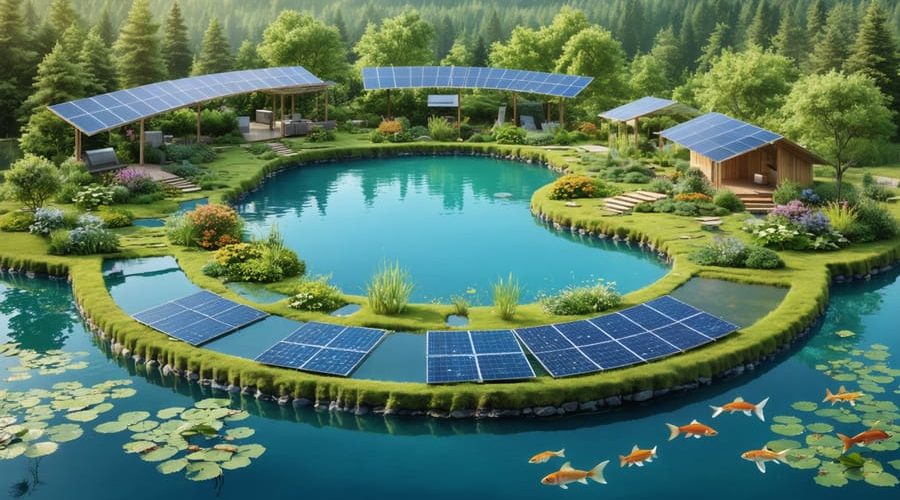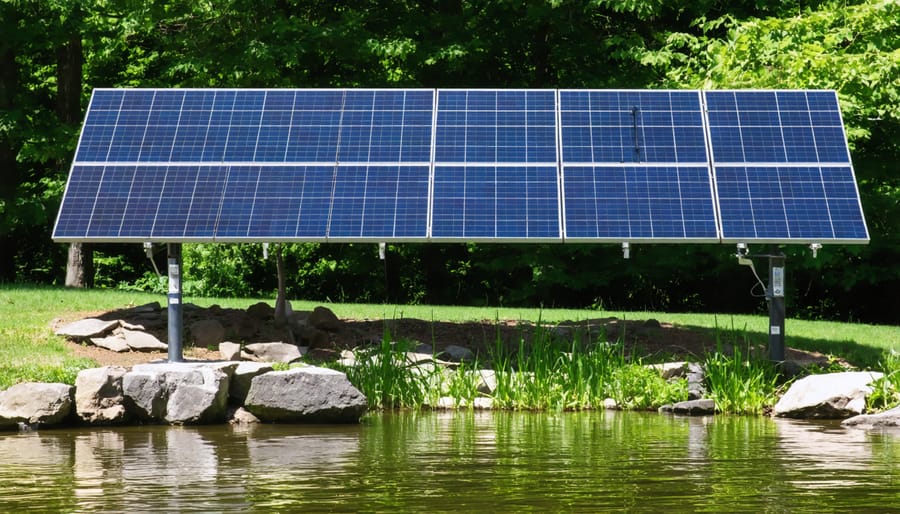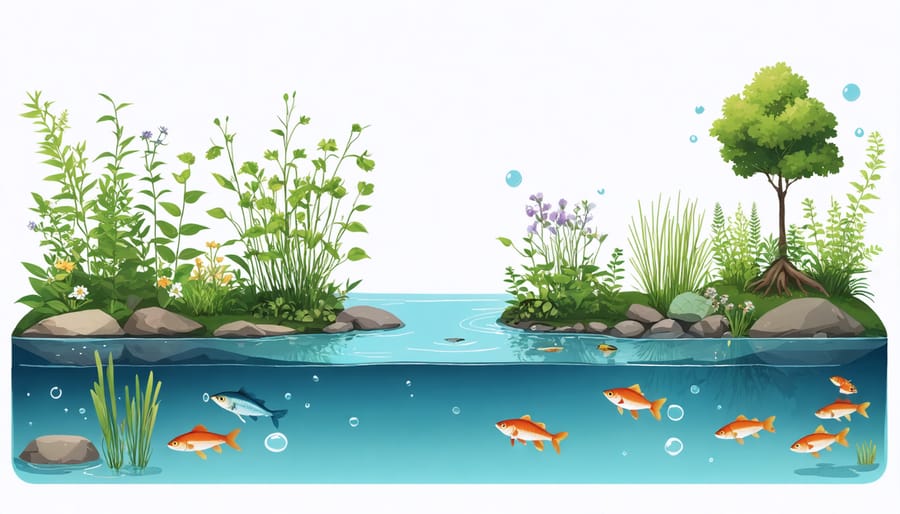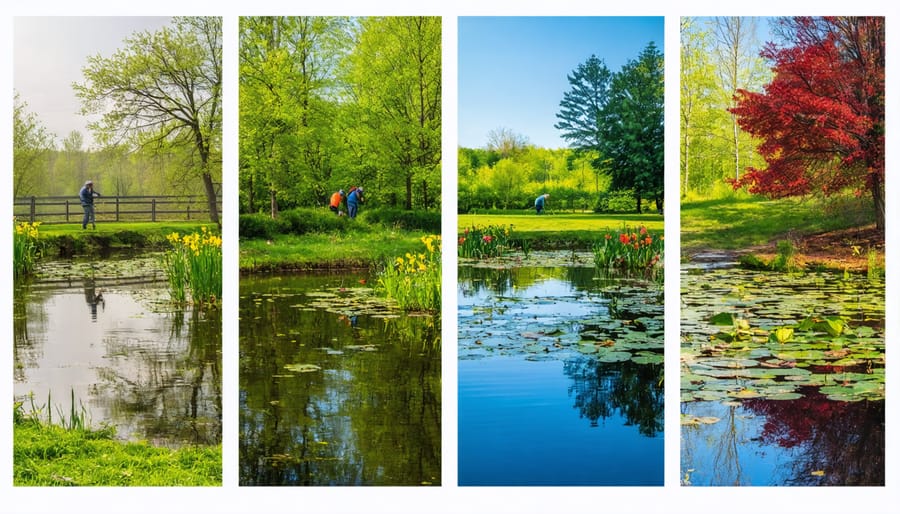
Make Your Pond Last Forever: Natural Sustainability Secrets That Work
Creating a sustainable pond ecosystem requires more than just good intentions – it demands a fundamental understanding of nature’s delicate balance. The six principles of sustainability serve as our cornerstone for environmental stewardship, offering practical solutions to today’s ecological challenges while safeguarding tomorrow’s resources.
These principles transcend theoretical concepts, providing actionable frameworks that transform how we interact with our environment. From water conservation to biodiversity protection, each principle builds upon the others to create a comprehensive approach to environmental management. Whether you’re a homeowner looking to reduce your ecological footprint or a business owner seeking sustainable practices, these guidelines offer clear, implementable strategies that make a real difference.
In this guide, we’ll explore how these six fundamental principles work together to create lasting, positive environmental impact. You’ll discover practical applications that not only benefit the environment but also lead to cost savings and improved resource efficiency. By understanding and implementing these principles, you’ll join a growing movement of environmental stewards working toward a more sustainable future.
1. Energy Conservation in Your Pond System
Solar-Powered Solutions
Solar power is a game-changer for sustainable pond management, offering eco-friendly solutions that can significantly reduce your energy consumption. Solar-powered pumps and aerators are becoming increasingly efficient and affordable, making them practical alternatives to traditional electrical equipment. These systems work by converting sunlight into electricity through solar panels, which can be discreetly positioned near your pond.
For smaller ponds, solar-powered fountain pumps can provide adequate circulation while creating attractive water features. These systems work best during daylight hours and are perfect for areas where running electrical lines would be difficult or costly. For larger setups, hybrid solar systems with battery backup ensure continuous operation even during cloudy periods or at night.
Solar-powered LED lighting can illuminate your pond beautifully while consuming minimal energy. These lights charge during the day and automatically switch on at dusk, creating enchanting evening displays. When selecting solar equipment, consider your pond’s size, local climate, and daily sunlight exposure to ensure optimal performance. Many solar solutions now come with smart controllers, allowing you to adjust settings and monitor energy usage from your smartphone.

Natural Filtration Systems
Natural filtration systems harness the power of biology to keep pond water clean and healthy. Plants, beneficial bacteria, and other organisms work together to break down waste and maintain water quality, just like nature intended. The best part? These systems require minimal maintenance once established.
Aquatic plants are the workhorses of natural filtration. Water lilies, cattails, and rushes absorb excess nutrients that could otherwise feed algae. Their roots provide a home for beneficial bacteria that convert harmful ammonia into less toxic compounds. Adding a variety of plants creates a balanced ecosystem that largely maintains itself.
Creating shallow areas with gravel beds allows beneficial bacteria to thrive while providing natural filtration zones. These areas, called bog filters, work particularly well when planted with moisture-loving species. The gravel traps debris while the plant roots and bacteria clean the water as it flows through.
Fish also play a role in natural filtration. Bottom feeders like koi help stir up sediment that can then be filtered out, while their waste provides nutrients for plants. This creates a wonderful cycle of natural sustainability that mimics wild pond ecosystems.
2. Water Conservation Techniques
Rainwater Harvesting
Rainwater harvesting is one of the most effective water conservation methods for your pond ecosystem. By collecting and storing rainwater, you can reduce your reliance on municipal water supplies while providing your pond with chemical-free, naturally balanced water. Setting up a basic harvesting system is surprisingly simple – all you need is a collection surface (like your roof), gutters, and storage tanks or barrels. The collected rainwater can be used not only for topping up your pond but also for irrigating surrounding water gardens and landscapes.
Consider installing rain gardens or bioswales near your pond to help filter and direct rainwater naturally. These features slow down water flow, reduce erosion, and create additional wildlife habitats. For best results, position your collection system to maximize rainfall capture during wet seasons, and include a first-flush diverter to ensure cleaner water reaches your storage tanks. Remember to cover storage containers to prevent mosquito breeding and leaf debris accumulation.
Evaporation Prevention
Preventing water loss through evaporation is crucial for maintaining a sustainable pond ecosystem. Natural shade from carefully positioned aquatic plants can significantly reduce water evaporation by blocking direct sunlight. Consider adding floating plants like water lilies or surface-covering vegetation that not only look beautiful but also create a natural barrier against evaporation.
Installing a pond cover during peak evaporation periods can be highly effective. However, ensure it’s properly ventilated to maintain healthy gas exchange for your aquatic life. Adding a windbreak, such as strategic landscaping or decorative screens, helps minimize water loss from wind exposure while enhancing your pond’s aesthetic appeal.
Maintaining appropriate water depth is another key factor – deeper ponds generally experience less evaporation than shallow ones. During hot seasons, consider keeping water levels slightly higher to compensate for increased evaporation rates. Regular monitoring of water levels helps you catch and address excessive water loss before it becomes problematic.
3. Natural Resource Management
Native Plant Selection
When it comes to choosing native pond plants, local species are your best friends for creating a sustainable water garden. Native plants have evolved to thrive in your specific climate and soil conditions, making them naturally resilient and easier to maintain. They require less water, fewer fertilizers, and are better equipped to handle local weather patterns.
These plants also play a crucial role in supporting local wildlife, providing food and shelter for native birds, butterflies, and beneficial insects. They help maintain the natural ecosystem balance and create a more sustainable environment around your pond. Look for species that are indigenous to your area and avoid invasive plants that can upset the local ecological balance.
Consider incorporating a mix of submerged, floating, and marginal plants native to your region. This diversity not only creates a more visually appealing pond but also establishes a self-sustaining ecosystem that requires minimal intervention.
Beneficial Microorganisms
Beneficial microorganisms are nature’s tiny helpers in maintaining a healthy pond ecosystem. These microscopic warriors work tirelessly to break down organic waste, control algae growth, and maintain water quality. By introducing beneficial bacteria to your pond, you’re creating a natural cleaning crew that works 24/7.
These helpful organisms come in various forms, from naturally occurring bacteria to specially cultivated strains. They digest excess nutrients that would otherwise feed unwanted algae, decompose fallen leaves and fish waste, and help maintain crystal-clear water. Regular additions of beneficial bacteria, especially during warmer months, can significantly reduce maintenance needs and create a more balanced environment.
For best results, add beneficial bacteria monthly during the growing season and after heavy rains. Look for products containing multiple strains of beneficial bacteria, and avoid using harsh chemicals that might harm these helpful microorganisms. Remember, a healthy bacterial colony is the foundation of a sustainable pond ecosystem.
4. Waste Reduction and Recycling
Composting Aquatic Waste
Transforming aquatic waste into valuable garden nutrients is a sustainable way to close the nutrient cycle in your pond ecosystem. When you clean your pond or remove excess plants, don’t throw these materials away – they’re garden gold! Dead leaves, aquatic plant trimmings, and even some algae can be mixed with regular garden waste to create nutrient-rich compost.
Start by layering pond waste with brown materials like dried leaves or cardboard. Ensure the mixture stays moist but not waterlogged, and turn it regularly to maintain proper aeration. Pond waste is particularly rich in nitrogen and trace minerals that plants love. Within a few months, you’ll have dark, crumbly compost perfect for garden beds and potted plants.
Be careful not to include any diseased plants or invasive species in your compost pile. These materials should be disposed of separately to prevent spread. Also, avoid composting any fish waste or dead animals, as these can attract pests and create unpleasant odors.
Material Reuse Strategies
When deconstructing or updating your pond, many materials can find new life in creative ways. Old pond liner pieces make excellent weed barriers in garden beds or can be repurposed as waterproof tarps for outdoor storage. Clean rocks and gravel from your pond system work perfectly in rock gardens, pathway borders, or drainage areas around your property. Empty containers that once housed aquatic plants can be transformed into unique planters for your terrestrial garden or used to start seedlings.
Decorative elements like statues or fountains can be reimagined as garden focal points, while unused pumps and filters might serve well in smaller water features or indoor fountains. Even biological filter media can be repurposed as soil amendments for garden beds, providing excellent aeration and beneficial bacteria. Before discarding any pond materials, consider their potential value in other landscaping projects or share them with fellow pond enthusiasts in your community.

5. Ecosystem Balance
Fish and Plant Harmony
Creating a balanced pond ecosystem requires careful attention to fish and plant populations. Think of your pond as a delicate dance between these two elements – too many fish can stress the system, while too few plants might not provide enough filtration and oxygen. A good rule of thumb is to maintain about 60% plant coverage and stock fish according to your pond’s size, typically allowing 50 gallons of water per inch of fish.
Plants act as natural filters, absorbing excess nutrients and providing shelter for fish. Meanwhile, fish help fertilize plants through their waste and keep insect populations in check. Watch for signs of imbalance like cloudy water or struggling plants, which might indicate overcrowding. If you’re just starting out, begin with a few hardy fish and gradually add more as your plant life establishes. Remember, it’s easier to add more fish later than to deal with an overcrowded pond!
Natural Pest Control
Natural pest control methods are essential for maintaining a healthy pond ecosystem without relying on harmful chemicals. Instead of reaching for pesticides, consider introducing beneficial predators like dragonflies and frogs, which naturally control mosquito populations. Adding native fish species can help manage unwanted insects while contributing to your pond’s biodiversity.
Plants play a crucial role in natural pest management. Include floating plants like water lilies to shade the water and discourage algae growth. Marginal plants not only create habitats for beneficial insects but also compete with unwanted vegetation for nutrients. Barley straw can be used as a natural algae deterrent, slowly releasing compounds that inhibit algae growth as it decomposes.
For slug and snail control, encourage natural predators like birds by installing appropriate perches near your pond. Remember that a balanced ecosystem is your best defense against pest problems, so focus on creating diverse habitats that support beneficial wildlife.
6. Long-term Maintenance Planning
Seasonal Care Routines
A well-planned seasonal maintenance routine is essential for sustainable pond management. In spring, focus on cleaning debris, checking filtration systems, and preparing plants for new growth. Add beneficial bacteria to jumpstart the ecosystem and trim back any dead plant material from winter.
Summer maintenance involves regular water testing, managing algae growth naturally, and ensuring proper aeration during warmer months. Keep an eye on water levels and top up with collected rainwater when possible.
Fall is crucial for preparing your pond for winter. Remove fallen leaves before they sink, trim back plants, and install protective netting. Consider adding cold-water beneficial bacteria to help break down organic matter during cooler months.
During winter, maintain a small opening in the ice for gas exchange, but avoid breaking ice directly over the pond. Keep your pump running at a reduced rate to prevent freezing and maintain oxygen levels. This year-round approach ensures your pond remains healthy while minimizing resource consumption and environmental impact.

Monitoring and Adjustment
Regular monitoring is the key to maintaining a sustainable pond ecosystem. Make it a habit to check your pond’s water quality at least once a week, paying special attention to pH levels, ammonia content, and water clarity. Keep a simple logbook to track these measurements – this will help you spot patterns and potential issues before they become problems.
Don’t be afraid to make adjustments when needed. If you notice algae growth increasing, consider adding more plants or adjusting your filtration system. When fish seem less active than usual, check your oxygen levels and adjust your aeration accordingly. Remember that a sustainable pond is dynamic, and what works in spring might need tweaking in summer.
Seasonal changes require special attention. Prepare for winter by reducing feeding, removing excess debris, and checking equipment. In spring, gradually restart your system and monitor how your pond awakens. These regular checks and timely adjustments ensure your pond remains healthy and sustainable year-round.
By implementing these six principles of sustainability in your pond management, you’ll create a thriving ecosystem that benefits both your garden and the environment. These practices not only reduce maintenance costs but also create a more resilient and self-sustaining water feature that will bring joy for years to come. You’ll notice improved water quality, healthier fish and plants, and fewer algae problems, all while minimizing your environmental impact.
The beauty of these sustainable approaches lies in their simplicity and effectiveness. From natural filtration systems to responsible water management, each principle works in harmony with nature rather than against it. You’ll spend less time troubleshooting issues and more time enjoying your pond’s peaceful atmosphere.
Remember, sustainable pond keeping is a journey, not a destination. Start with small changes and gradually incorporate more practices as you become comfortable. The rewards are worth the effort: lower maintenance costs, reduced chemical use, improved wildlife habitat, and the satisfaction of knowing you’re contributing to environmental conservation right in your own backyard.
